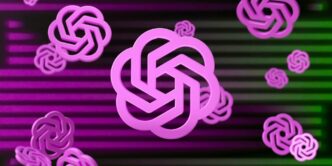So, you want to get into AI? That’s a smart move. Artificial intelligence is changing everything, and knowing your way around it can really open doors. It might seem a bit much at first, like trying to drink from a firehose. But don’t worry, we’re going to break it down. This guide will show you how to study AI, step by step, so you can actually understand it and use it. We’ll cover everything from the basics to getting hands-on with projects. Let’s get started on figuring out how to learn AI.
Key Takeaways
- Start with the basics: get a handle on what AI is, why it matters, and how it’s used in the real world.
- Make a plan: figure out what you already know, set some goals, and then map out how you’ll learn.
- Build your foundation: learn programming, math, and data stuff. These are your building blocks for AI.
- Get into machine learning: learn about how machines learn, especially neural networks, and try building some models.
- Do projects: the best way to learn is by doing. Start small, join open-source groups, and build a portfolio.
Understanding the Core Concepts of AI
Before you even think about writing code or building models, it’s important to get a handle on what AI actually is. It’s more than just robots taking over the world (at least for now!). Let’s break down some key ideas.
Defining Artificial Intelligence
So, what is AI? At its heart, it’s about making machines do things that would normally require human intelligence. Think about things like learning, problem-solving, and even understanding language. AI tries to mimic these abilities using computer systems. It’s a broad field, and it’s constantly changing. You’ll hear terms like machine learning, deep learning, and natural language processing thrown around – these are all subfields of AI. It’s good to get a handle on the basics of AI ethics before you get too far into the weeds.
The Importance of Learning AI
Why bother learning AI? Well, for starters, it’s becoming a bigger part of our lives every day. From the algorithms that suggest what to watch next to the tools doctors use to diagnose diseases, AI is already here. And it’s only going to become more prevalent. Learning AI can open up a ton of opportunities, whether you’re looking for a new career, want to improve your current skills, or are just curious about how things work. Plus, understanding AI helps you to be a more informed citizen in a world increasingly shaped by technology. It’s not just about getting a job; it’s about understanding the world around you. Here are a few reasons why learning AI is a good idea:
- It’s in high demand in the job market.
- It helps you understand current and future technologies.
- It can improve your problem-solving skills.
Real-World Applications of AI
AI isn’t just some abstract concept; it’s being used in all sorts of industries right now. Think about self-driving cars, personalized medicine, fraud detection, and even your favorite streaming service’s recommendation engine. The possibilities are pretty much endless. Here’s a quick look at some areas where AI is making a big impact:
- Healthcare: AI is helping doctors diagnose diseases earlier and develop personalized treatment plans.
- Finance: AI is used to detect fraud, manage risk, and automate trading.
- Transportation: Self-driving cars and trucks are becoming a reality thanks to AI.
- Retail: AI is used to personalize shopping experiences and optimize supply chains.
Understanding these applications can give you a better sense of the potential of AI and where you might want to focus your learning efforts. It’s a good idea to look at some AI algorithms to see how they work in practice.
Crafting Your Personalized AI Learning Path
Okay, so you’re ready to jump into AI. Awesome! But where do you even start? It’s like staring at a giant buffet – so many options, it’s easy to get overwhelmed. That’s where crafting your own learning path comes in. It’s about figuring out what works for you, not just following some generic advice. Let’s break it down.
Assessing Your Current Knowledge
First things first: be honest with yourself. What do you already know? Have you ever coded before? Are you comfortable with math? It’s okay if the answer is "not really!" Knowing your starting point is half the battle. Think of it like this:
- No experience: You’re brand new. Focus on the basics – programming fundamentals, basic math concepts. Don’t try to run before you can walk.
- Some programming experience: You’ve dabbled in Python or another language. Great! You can probably skip some of the super-basic stuff and jump into AI-specific libraries sooner.
- Strong math background: Calculus and linear algebra are your friends. This will give you a leg up when understanding the algorithms behind machine learning. You might want to check out ChatGPT-5 to help you understand the basics.
Setting Clear Learning Objectives
What do you want to do with AI? Do you dream of building self-driving cars? Creating AI-powered art? Predicting the stock market? Having a goal in mind will keep you motivated and focused. Instead of saying "I want to learn AI," try something like:
- "I want to build a chatbot that can answer customer service questions."
- "I want to use machine learning to predict customer churn."
- "I want to understand how neural networks work."
Specific goals make it easier to find the right resources and track your progress. Plus, it’s way more satisfying to check things off a list!
Developing a Structured Study Plan
Alright, you know where you’re starting and where you want to go. Now it’s time to map out the journey. A structured study plan doesn’t have to be rigid, but it should give you a roadmap. Consider these elements:
- Time commitment: How much time can you realistically dedicate each week? Be honest! It’s better to start small and be consistent than to burn out trying to do too much too soon.
- Resource selection: Choose your learning materials. Will you take online courses? Read textbooks? Follow tutorials? Mix and match to keep things interesting. Maybe start with an AI for Everyone course to get a broad overview.
- Project milestones: Plan small projects along the way to apply what you’re learning. This is where the magic happens! Don’t just passively consume information – build something. Even if it’s a simple "Hello, world!" program for AI, it’s a step in the right direction.
Here’s a sample weekly schedule:
| Day | Activity | Time (hours) |
|---|---|---|
| Monday | Online course: Python basics | 1 |
| Tuesday | Read textbook: Intro to Linear Algebra | 1 |
| Wed | Work on a simple Python project | 1 |
| Thurs | Online course: Machine Learning basics | 1 |
| Friday | Experiment with AI tools | 1 |
| Weekend | Review notes, work on a larger project | 2-4 |
Remember, this is just an example. Adjust it to fit your own needs and schedule. The key is to be consistent and keep moving forward. Good luck!
Building Foundational Skills for AI
Okay, so you’re serious about getting into AI? Awesome! But before you start dreaming of building the next big thing, you gotta nail down some basics. Think of it like building a house – you can’t just start putting up walls without a solid foundation, right? Same deal here. Let’s talk about the skills you absolutely need.
Mastering Essential Programming Languages
Python is pretty much the king when it comes to AI. It’s readable, has tons of libraries specifically for machine learning, and a huge community to help you out when you get stuck (and trust me, you will get stuck). But don’t ignore other languages either! R is great for statistical analysis, and Java/C++ can be useful for performance-critical applications. Pick one to start, get comfortable, and then branch out. It’s like learning a musical instrument; once you know one, picking up others becomes way easier. You can use these skills to improve AI-driven analytics.
Here’s a quick rundown:
- Python: Easy to learn, huge community, tons of libraries (like TensorFlow, PyTorch, scikit-learn).
- R: Statistical computing and graphics, good for data analysis.
- Java/C++: Performance, useful for embedded systems and optimizing algorithms.
Grasping Key Mathematical Concepts
Alright, math. I know, I know, it’s not everyone’s favorite. But seriously, you can’t escape it in AI. You don’t need to be a math genius, but you do need to understand the core concepts. Linear algebra, calculus, probability, and statistics are all super important. Linear algebra helps you understand how algorithms work with data, calculus is used in optimization, and probability/statistics are essential for understanding uncertainty and making predictions. Don’t freak out if you haven’t seen this stuff in a while; there are tons of online resources to help you brush up.
Think of it this way: you don’t need to know every single math formula, but you need to understand the ideas behind them. It’s like cooking – you don’t need to memorize every recipe, but you need to understand how different ingredients interact.
Understanding Data Structures and Algorithms
Data structures and algorithms are the building blocks of any software, and AI is no exception. You need to know how to efficiently store and manipulate data, and how to design algorithms that can solve problems quickly and accurately. Things like arrays, linked lists, trees, graphs, sorting algorithms, and searching algorithms are all things you should be familiar with.
It might sound intimidating, but it’s really just about learning the tools of the trade. Once you have a good grasp of these concepts, you’ll be able to write more efficient code and solve more complex problems. Plus, understanding this stuff will make you a better programmer in general, which is always a good thing. Here’s a simple table to illustrate the importance:
| Concept | Why It’s Important |
|---|---|
| Arrays | Storing collections of data |
| Linked Lists | Dynamic data storage |
| Trees | Representing hierarchical relationships |
| Sorting | Organizing data for efficient searching |
| Searching | Finding specific data within a larger dataset |
Diving Deeper into Machine Learning
Okay, so you’ve got the basics down. Now it’s time to really get into the meat of things: machine learning. This is where AI starts to feel less like abstract concepts and more like actual, working technology. It can seem intimidating at first, but breaking it down into smaller parts makes it way more manageable. I remember when I first started, I was totally lost in the jargon, but trust me, it clicks eventually.
Exploring Supervised and Unsupervised Learning
These are the two main flavors of machine learning, and understanding the difference is super important. Supervised learning is like having a teacher showing you the right answers, while unsupervised learning is more like exploring a new place on your own. With supervised learning, you feed the algorithm labeled data, and it learns to predict outcomes. Think of it like teaching a computer to recognize cats in pictures by showing it a bunch of pictures of cats and telling it, "These are cats!" Unsupervised learning, on the other hand, involves giving the algorithm unlabeled data and letting it find patterns on its own. This is useful for things like customer segmentation or anomaly detection.
Here’s a quick comparison:
| Feature | Supervised Learning | Unsupervised Learning |
|---|---|---|
| Data | Labeled | Unlabeled |
| Goal | Prediction, Classification | Pattern Discovery, Clustering |
| Examples | Image recognition, spam filtering | Customer segmentation, anomaly detection |
Understanding Neural Networks and Deep Learning
Neural networks are a type of machine learning model inspired by the structure of the human brain. They’re made up of interconnected nodes (neurons) that process information. Deep learning is essentially neural networks with many layers – hence the "deep." These layers allow the network to learn more complex patterns. Think of it like this: a simple neural network might be able to recognize edges in an image, while a deep learning network can combine those edges to recognize objects. Deep learning is behind a lot of the cool AI stuff you see these days, like image generation and natural language processing. It’s a bit more complex to get into, but definitely worth the effort.
Implementing Machine Learning Models
Theory is great, but at some point, you need to get your hands dirty and start building stuff. This means choosing the right tools and libraries. Python is your friend here. Libraries like scikit-learn, TensorFlow, and PyTorch make it way easier to implement machine learning models. Start with simple models like linear regression or decision trees, and then gradually move on to more complex ones like neural networks. Don’t be afraid to experiment and try different things. The best way to learn is by doing. Also, don’t underestimate the power of online tutorials and documentation. There are tons of resources out there to help you along the way. Just remember to take it one step at a time, and don’t get discouraged if things don’t work perfectly at first. It’s all part of the learning process.
Engaging in Practical AI Projects
Okay, so you’ve got some theory under your belt. Now it’s time to get your hands dirty! Honestly, the best way to really learn AI is by doing AI. Reading about it is one thing, but building something, anything, will solidify your understanding in a way textbooks just can’t.
Starting with Beginner-Friendly Projects
Don’t try to build Skynet on day one. Start small. Really small. Think about simple classification problems, like identifying handwritten digits (MNIST dataset is your friend here). Or maybe try building a basic spam filter. The point is to get comfortable with the workflow: data preparation, model selection, training, and evaluation. There are tons of tutorials online for these kinds of projects, so don’t be afraid to lean on them. You can even use TeachShare’s AI-Powered Project-Based Learning to help you get started.
Here are a few ideas to get you going:
- Simple Image Classifier: Classify images of cats vs. dogs. A classic!
- Basic Chatbot: Create a chatbot that can answer simple questions.
- Predictive Model: Predict housing prices based on features like square footage and location.
Collaborating on Open-Source Initiatives
Once you’ve tackled a few solo projects, consider contributing to open-source AI projects. This is a fantastic way to learn from experienced developers, see how real-world AI systems are built, and contribute to the community. GitHub is your friend. Look for projects that align with your interests and skill level. Don’t be intimidated! Even small contributions, like fixing bugs or improving documentation, can be incredibly valuable. Plus, it looks great on your resume.
Building a Portfolio of AI Work
Your portfolio is your golden ticket. Potential employers want to see what you can do, not just what you know. Make sure your portfolio is easily accessible (GitHub is great for this) and well-documented. For each project, include a clear description of the problem you were trying to solve, the approach you took, the results you achieved, and any challenges you encountered. Don’t be afraid to showcase projects that didn’t go perfectly! Learning from failures is just as important as celebrating successes. A good portfolio shows your ability to learn and adapt, which is super important in the fast-moving world of AI.
Leveraging Educational Resources for AI Study
It’s a great time to learn AI! There are so many resources available, many of them free or low-cost. You don’t need to go back to school to get started. Let’s look at some ways to get smart about AI.
Enrolling in Specialized AI Courses
Taking a course is a solid way to learn. Structured learning can really help you grasp the basics and move on to more complex stuff. Lots of universities and online platforms now have AI-focused courses. These courses often give you hands-on experience, which is super important. For example, you could check out AI courses on Coursera to start building your skills today. They often cover specific areas like machine learning, natural language processing, or computer vision. Look for courses that fit your skill level and interests.
Utilizing Online Learning Platforms
Online learning platforms are awesome. They have a ton of courses, tutorials, and learning paths. Places like Coursera, Udacity, edX, and even YouTube have content. The cool thing is you can learn at your own pace. Plus, many of these platforms offer certificates when you finish a course, which can look good on your resume. Google Cloud’s Introduction to Generative AI is a great way to explore the foundations of large language models.
Accessing Free Tutorials and Documentation
Don’t forget about free resources! There are tons of free tutorials, documentation, and blog posts out there. Websites like TensorFlow, PyTorch, and scikit-learn have great documentation. Plus, many AI researchers and practitioners share their knowledge through blog posts and tutorials. You can find answers to almost any question with a little searching. It’s a good way to supplement what you learn in courses or on learning platforms. For an overview of AI, try DeepLearning.AI’s AI For Everyone course taught by top instructor Andrew Ng.
Staying Current with AI Advancements

AI is moving fast. Like, really fast. What’s cutting-edge today might be old news tomorrow. So, how do you keep up? It’s not easy, but it’s doable. Here’s how I try to stay in the loop.
Following Leading AI Researchers and Publications
One of the best ways to stay informed is to follow the people who are actually making the advancements. I’m talking about the researchers, professors, and engineers pushing the boundaries of AI. Find out who’s publishing in the top journals and conferences. Many researchers are active on social media, sharing their latest work and thoughts. It’s a great way to get a peek behind the curtain. Also, keep an eye on publications. Here’s a short list of some popular ones:
- Journal of Machine Learning Research
- Artificial Intelligence Journal
- IEEE Transactions on Pattern Analysis and Machine Intelligence
Participating in AI Communities and Forums
Don’t try to go it alone! There are tons of online communities and forums dedicated to AI. Places like Reddit’s r/MachineLearning, Stack Overflow, and various Discord servers can be goldmines of information. You can ask questions, share your own projects, and learn from others. Plus, it’s a good way to network and find collaborators. I find that just reading through the discussions helps me understand what people are working on and what the hot topics are. It’s also a great way to find resources and AI courses that I might not have found otherwise.
Attending Industry Conferences and Workshops
If you can swing it, attending AI conferences and workshops is a fantastic way to learn and network. You’ll get to hear from leading experts, see the latest demos, and meet other people who are passionate about AI. Conferences like NeurIPS, ICML, and CVPR are big ones, but there are also smaller, more specialized events that might be a better fit for your interests. Many conferences also offer workshops where you can get hands-on experience with new tools and techniques. Plus, the after-parties can be pretty fun! Just be prepared to do a lot of walking and talking. It’s a great way to see how AI is transforming finance and other industries.
Conclusion: How to Get Started in AI
So, learning AI might seem like a big deal at first, right? But honestly, if you just break it down into smaller steps, it’s totally doable. You can really get a good handle on AI, machine learning, and all that related tech. Just start with the basics, like Python and AI ideas, then move on to machine learning and trying out some projects. With the right help and stuff to learn from, AI isn’t nearly as hard as it looks. You got this!
Frequently Asked Questions
What exactly is Artificial Intelligence (AI)?
AI is like teaching computers to think and learn, similar to how people do. It helps machines understand things, make choices, and even learn from their mistakes. Think of it as giving computers a brain!
Why should I bother learning about AI?
Learning AI is a smart move because it’s everywhere now, from your phone’s voice assistant to self-driving cars. Knowing about AI can open up many cool job opportunities and help you understand how new technologies are changing our world.
Do I need to be good at math to learn AI?
You don’t need to be a math genius, but knowing some basic math concepts like algebra and statistics will definitely help. It’s like knowing your ABCs before you read a book – it makes everything else easier to grasp.
What’s the best way to start learning AI if I’m a beginner?
Starting with a programming language like Python is a great idea. It’s pretty easy to learn and is used a lot in AI. Think of it as the main tool you’ll use to build AI stuff.
How long does it take to learn AI?
It’s not super quick, but you can learn the basics in a few months if you study regularly. Becoming really good takes more time and practice, kind of like learning to play a musical instrument.
Can I learn AI for free?
Absolutely! There are tons of free online courses, videos, and articles that can teach you. Many universities also offer free materials. You don’t always need to pay a lot to get started.














